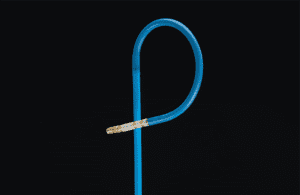
Acutus Medical’s AcQBlate Force sensing ablation catheter. Image courtesy of Acutus Medical
It’s about figuring out how and where to go with the cardiac ablation and then engineering the best catheter-based delivery device, according to a top Acutus Medical scientist.
Cardiac ablation is when a physician intentionally destroys a small amount of tissue in the heart to treat and prevent heart rhythm problems. The procedure creates therapeutic scars in the heart to block the irregular electrical signals that cause an uneven heartbeat.
To perform cardiac ablation, a physician inserts a thin, flexible catheter through veins or arteries into the heart. Sensors on the tip of the catheter detect the electrical signals inside the heart, which allows a cardiologist to pinpoint which area of the heart requires ablation.
Ablation devices mostly use heat (radiofrequency energy), extreme cold (cryoablation), or nonthermal pulsed-field energy to create small scars on the heart and block irregular heart rhythms. Cardiac ablation devices are on the market from prominent medtech players including Medtronic, Boston Scientific, Abbott, Atricure, Acutus Medical and others.
Acutus Medical Chief Translational Science Officer Dr. Steven Mickelsen — who was the founder of pulsed-field ablation device maker Farapulse, now a part of Boston Scientific — told Medical Tubing + Extrusion about the main challenges in creating cardiac ablation devices.
Get the full story on our sister site, Medical Tubing + Extrusion.